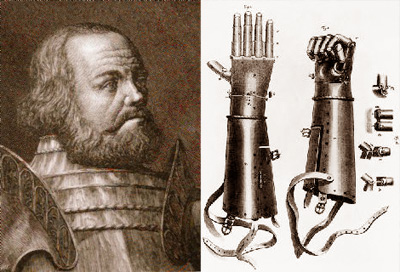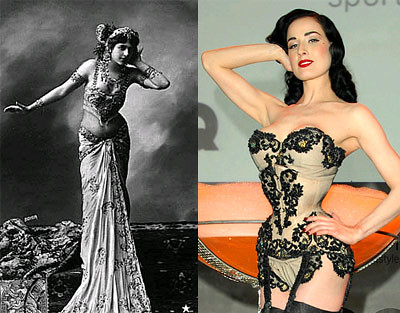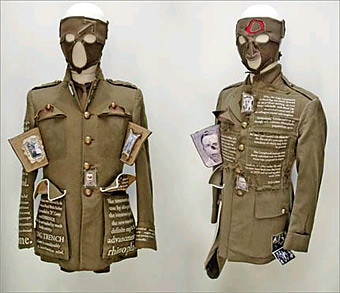What a historic day! Big, bonecrushing hugs from all of us here at CH headquarters to everyone else on planet earth who is rejoicing at the departure of the Bush administration. There will never be a better time to post the following human rights essay and interview that our staffer Jeff Wengrofsky (aka Agent Double Oh No) has been working on for months. At Coilhouse, we’re glad to supply subject matter ranging from the utterly frivolous to the deeply involved and intense. This piece goes in the latter category. We’re honored to provide a forum for Jeff’s in-depth, thought-provoking conversation with human rights activists Suzette Brunkhorst and Ronald Eissens. We hope that their story and struggle will move some of you as much as it has moved us. ~Mer

“Human institutions appear to be the obvious and obtrusive causes of
much mischief to mankind; yet in reality, they are light and superficial
…in comparison with those deeper seated causes of impurity
that…render turbid the whole stream of human life.“
– Thomas Malthus (1798)
As membership is constitutive for a society, its conditions are routinely, if not essentially, contested. More than any other society, America has wrestled with two competing notions of membership: one based on exclusion (class until 1824, race formally until 1870 and practically until 1965, and gender until 1920) and another based on inclusion and rooted in the Declaration of Independence’s influential clause: “all…are created equal.” This quarrel over defining principles was apparent even in the drafting of the Declaration. Thomas Jefferson’s original document, later altered in a compromise, called for the abolition of slavery. Jefferson himself was in love and sired children with Sally Hemings, an African-American who was the half-sister of his wife and his slave. And so, America was born in original sin under a star of some perversion with an ever-present element of redemption. Even today, America blinks like a giant, Masonic hologram, simultaneously symbolizing and embodying our greatest hope and, in the Bush years, our greatest disappointment.
In 1903, W.E.B. DuBois declared “the color line” to be the defining issue of the 20th Century. The election of Barack Hussein Obama Jr. opens up the question as to whether the United States has begun the new century by transcending racial exclusion. Surely the America of 1903 looks little like the America of today: African-Americans are no longer its largest ethnic minority, its citizenry includes significant numbers of people who do not fit into the black-white axis, the Civil Rights and Voting Rights Acts rendered discrimination illegal 43 years ago, Affirmative Action dates back to J.F.K., intermarriage is not unusual, Martin Luther King’s birthday is a national holiday, racial bigotry has long since fallen into disrepute in the sciences and is not tolerated in polite conversation, and even the Bush Administration had African-Americans in its cabinet. On the other hand, police departments are often charged with brutality and “stop and frisk” policies that target black youth, African-Americans continue to be overrepresented among our nation’s most impoverished and undereducated and imprisoned, and African-Americans are the victim of more hate crime than any other group in the United States.

Certainly it is very unusual for the people of any society to select a member of a minority (however understood) to its highest office and, perhaps, this event is even more profound in a country whose entire history can be understood as a long and troubled march toward the fulfillment of its inclusive promise. Can 300 years of racial difference be transcended by legislation or election? Will Americans whose biographies are not like Obama’s accept his leadership in a time of economic and ecological crisis? With the election of Obama, is the United States once again poised to provide moral leadership (as it surely did in 1776)? Is international moral leadership possible? It seems as though history itself has opened and the full range of human potential – the good, the bad, and the ugly – are all equally likely.
What is “racism”? Are all bigotries a form of racism? Is racism conceptually distinct from other forms of ethnic chauvinism? The major genocides of the past century were, aside from the Nazi extermination of the Jews, not understood in racial terms: the Turkish-Armenian genocide (1915-18), the Turkish-Greek genocide (1914-23), Stalin’s liquidation of the Kulaks (1932-33), the Japanese-Chinese genocide in Nanking (1937-38), the Nigerian-Biafran genocide (1966-1970), the Pakistani-Bangladeshi genocide (1971), the Tutsi-Hutu genocide in Burundi (1972), Pol Pot’s Cambodian purges (1975-79), the Hutu-Tutsi genocide in Rwanda (1994), and the Serb-Bosnian genocide (1992-95).
Where do these cleavages, these notions of belonging and otherness, come from? They are found in various forms in every human society. Sadly, our closest kin in the animal world also share this trait. Wars among chimpanzees and between apes have been noted by biologists since 1970. Are hatreds naturally rooted in “selfish genes”? If so, do we need unrealizable principles to inform our behavior and ground social criticism?
Is cosmopolitanism – the idea that one can be a “citizen of the world” – possible? Aren’t we always already embedded in cultural conversations, genetic inheritances, and political communities? Does anyone have arms long enough to embrace humanity as a whole? What do we do with those who return our embrace with bullets and bombs? Is cosmopolitanism an unrealistic retreat from the world as it actually is? Is cosmopolitanism a rhetorical strategy of the weak to keep the strong from winning?

Suzette Brunkhorst and Ronald Eissens.
On Thanksgiving, an American holiday whose lore bespeaks inclusion and exclusion, I sat down to discuss hate, race, and the limits of freedom in Holland, often considered among the freest places in this world, and on the internet, a transnational network, with Suzette Brunkhorst and Ronald Eissens, the Directors of the Magenta Foundation. In their own words, “Magenta is a foundation that aims to combat racism and other forms of discrimination primarily on and through the Internet.” They have organized many high profile events in the name of inclusion and understanding, and have presented reports on bigotry before the United Nations and the O.S.C.E. Undeterred in the face of many death threats, they are cosmopolitan heroes. Sadly, just one day after this interview, Suzette was diagnosed with cancer and has since gone into chemotherapy. On this day, full of hope, let’s wish her a fast and painless recovery.
(Jeff’s full interview with Suzette Brunkhorst and Ronald Eissens appears after the jump.)













